denmark and sweden covid vaccination lessons
which part of the disease season you vaccinate in matters. it determines how much risk you are accelerating in the 2 week window of negative VE.
denmark and sweden pose an interesting set of case studies on covid and on vaccination. like so much in covid, many of the lessons are not what people think they are and many of the claims that have been made fail to hold water when one actually looks at the data.
first off, both did VERY well with covid. neither showed any real rise in all cause deaths last year . so we’re starting from a place of rough equality and of major global outperformance (US all cause deaths were 25% above avg.) sweden’s very inclusive standard of “any death for any reason within 30 days of a positive covid test is a covid death” has led to them being (unjustly to my mind) accused of being a catastrophe. they were not.
policies were somewhat (though far less) different than many have suggested, but both are now very similar. denmark has dropped all restrictions. sweden is pretty wide open too. life in both places is pretty normal.
party on vikings. party on.





but there is another interesting similarity: both began vaccination campaigns late and ramped up to high levels of vaccination. we can see this here. started vaccinating in in january and were at about 2% by late jan.
the curves are so similar though june as to be near indistinguishable.
but here’s where it gets a little divergent.
sweden experienced an extreme (and seasonally unexpected) “double saddle” surge. and it began RIGHT when you would expect it to if there were a 2 week worry window of strongly negative vaccine efficacy post dose one. but denmark saw a much milder one (albeit one that also resurged in july.
this is confirmed in the deaths data (though this can be iffy to compare head to head due to sweden’s definitions)
excess mortality bottomed and rebounded in both places right about when vaccination campaigns started to gather steam in late feb.
so again, as we saw in israel and palestine and mongolia (though to a far lesser extent) we see vaccines driving a short term surge in cases and in deaths.
this leads to two interesting questions:
why did this have so much less effect in the nordics than in the levant or mongloia?
why was this effect more attenuated in denmark than in sweden?
interestingly enough, i think the answer to both questions may be the same: seasonality.
if vaccines cause 40-100% risk amplification in the first two weeks (per the danish and other studies) you can expect pandemic acceleration.
but this is always a function of the base state. if you double 1% risk to 2%, it can get lost in the noise or seasonal pattern. if you double 10% to 20%, it’s like a nautical strobe light on a dark night. you can’t miss it.
and THAT seem to be the key. israel has had a bad habit of pushing big vaccination campaigns during peak disease seasons. so they amplify big risk. but the nordics did it in late feb and early march, well past peak season.
further, while sweden and denmark practically touch, their key population centers (stockholm and copenhagen) are 4 degrees of latitude apart. that’s about like NYC vs the top of north carolina.
so you get different seasonal zones there. and i think that explains the variance.
denmark was just further along in getting out of covid season. (look back at the cases graph)
R in sweden was at 0.9 on jan 19th when it bottomed and reversed.
R in denmark was only 0.68.
both rose, but denmark was rising from a lower rate AND from a lower base.
cases/day were 103/million vs 278 in sweden.
so sweden got this spike while denmark’s was muted (though seems to have gone on longer)
this would seem to imply that WHEN you vaccinate can have a big effect on the pandemic.
if you’re going to amplify risk, you want to amplify low risk, not high. vaccinating for covid once disease is already running looks to be a bad idea.
this is a useful and perhaps counter-intuitive fact to file away. pushing vaccines (and seemingly boosters) during periods of peak disease appears ill advised.
what will be interesting is to track these two high vaccination places in the coming season to see how they fare and whether they start exhibiting symptoms of vaccinated superspread hypothesis behavior, but it’s still too early to see anything on that now.





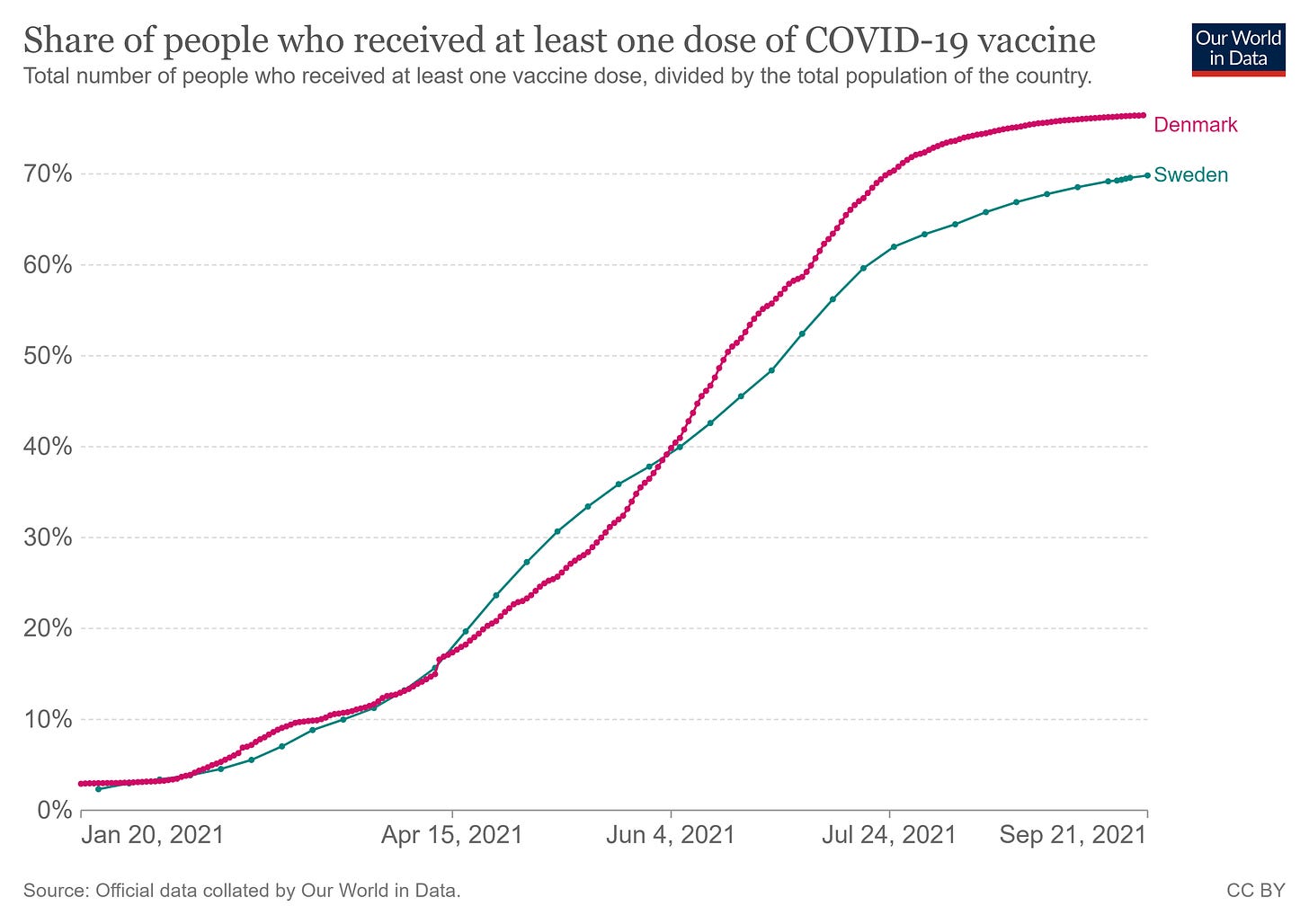
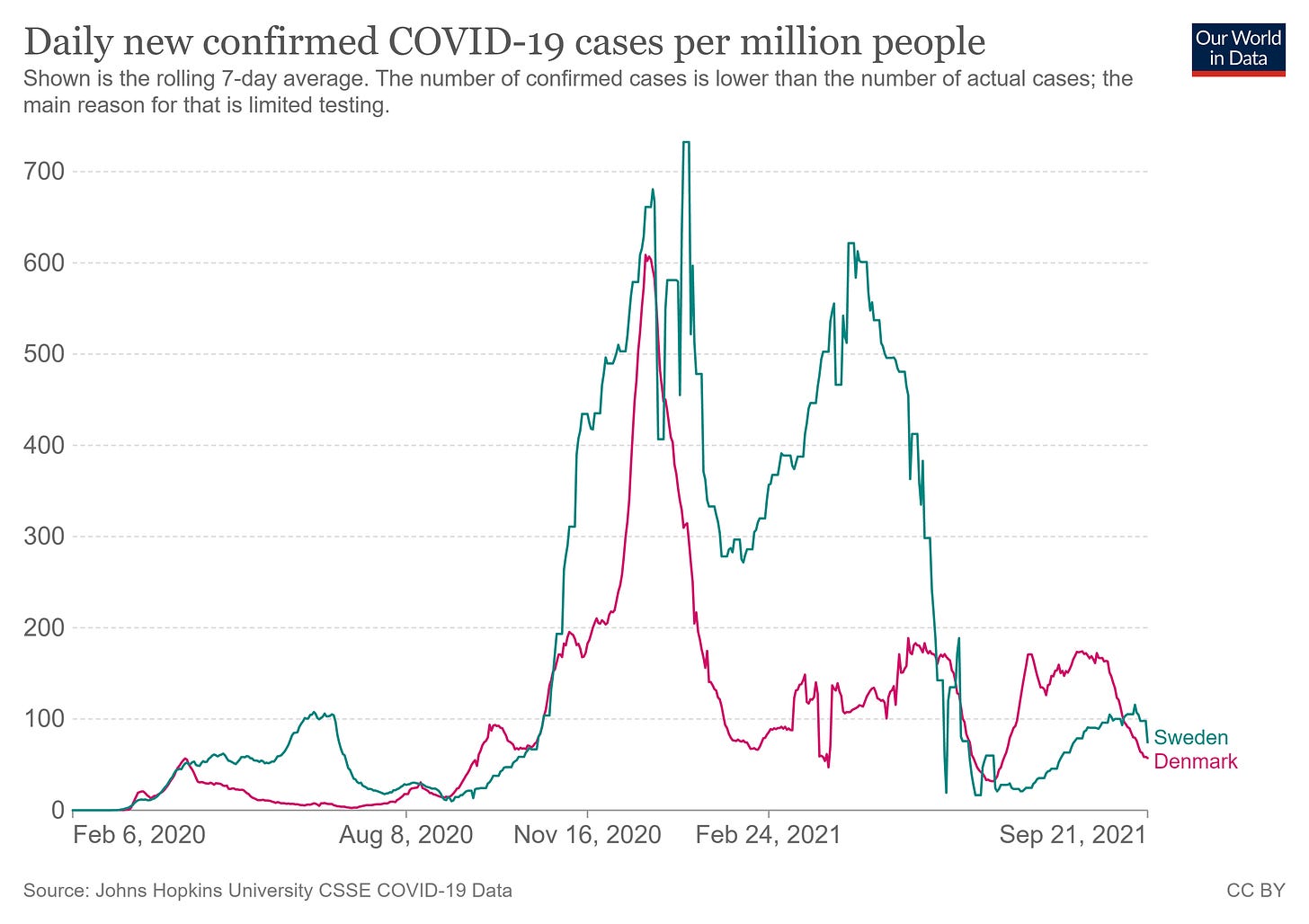
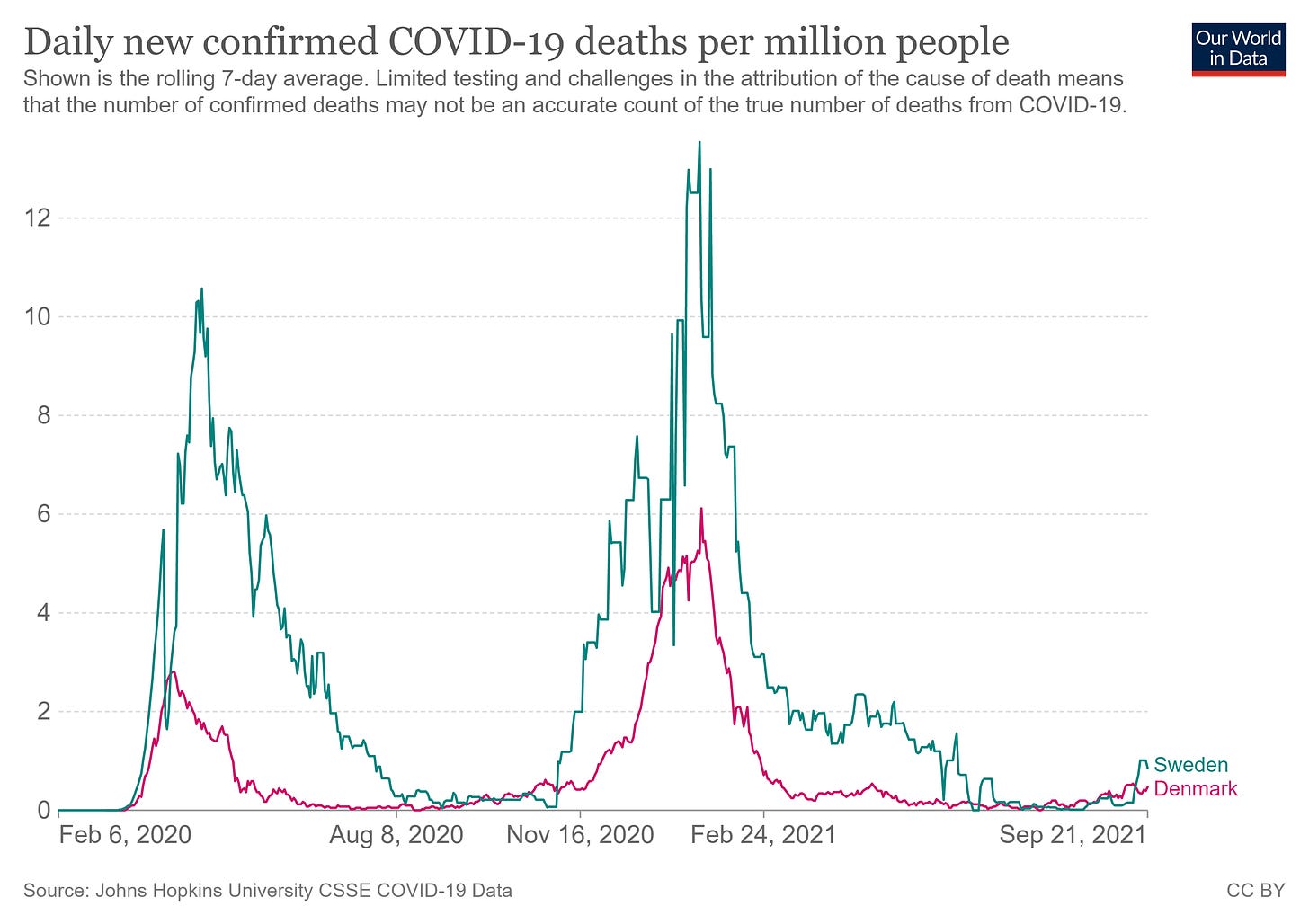
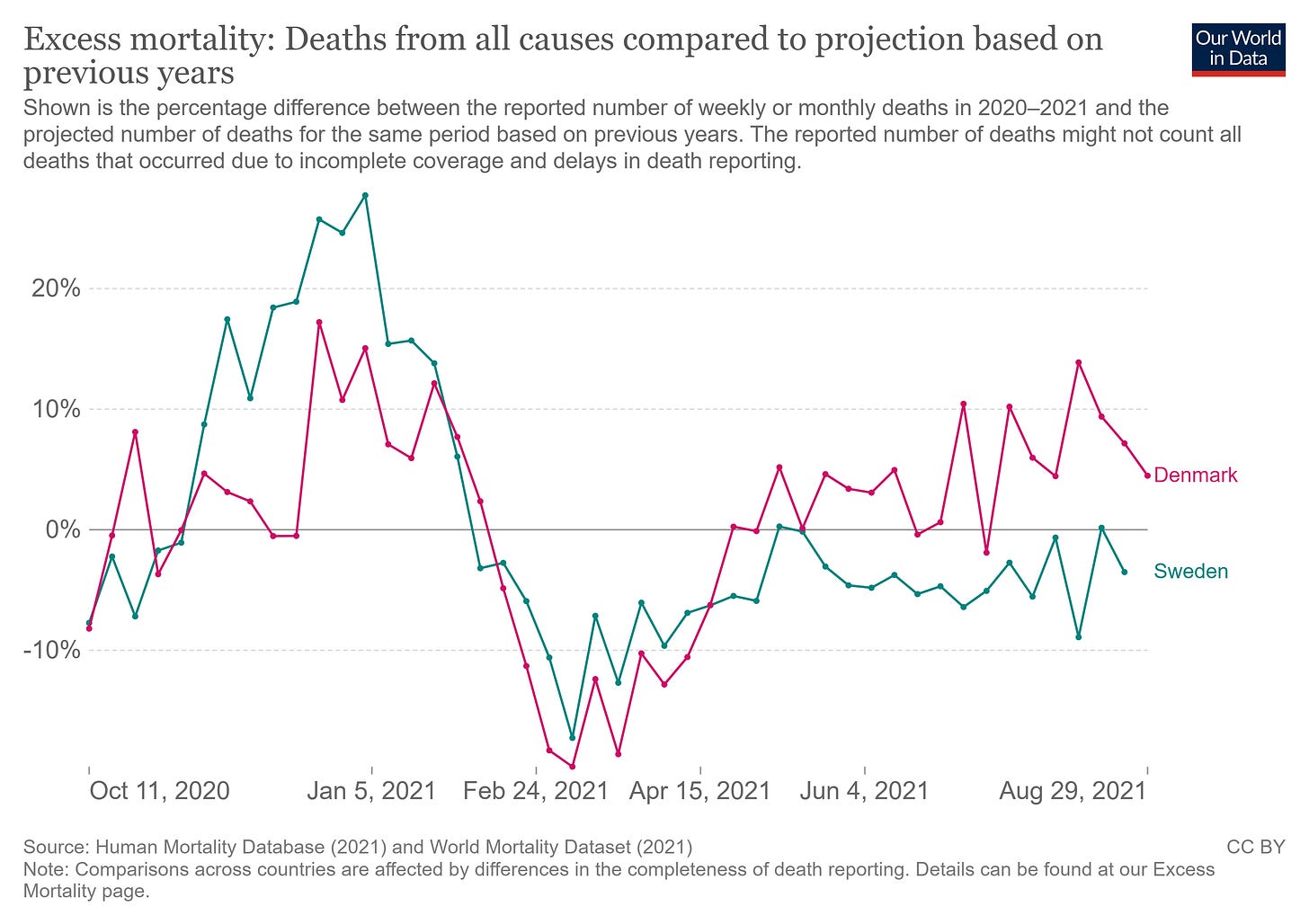

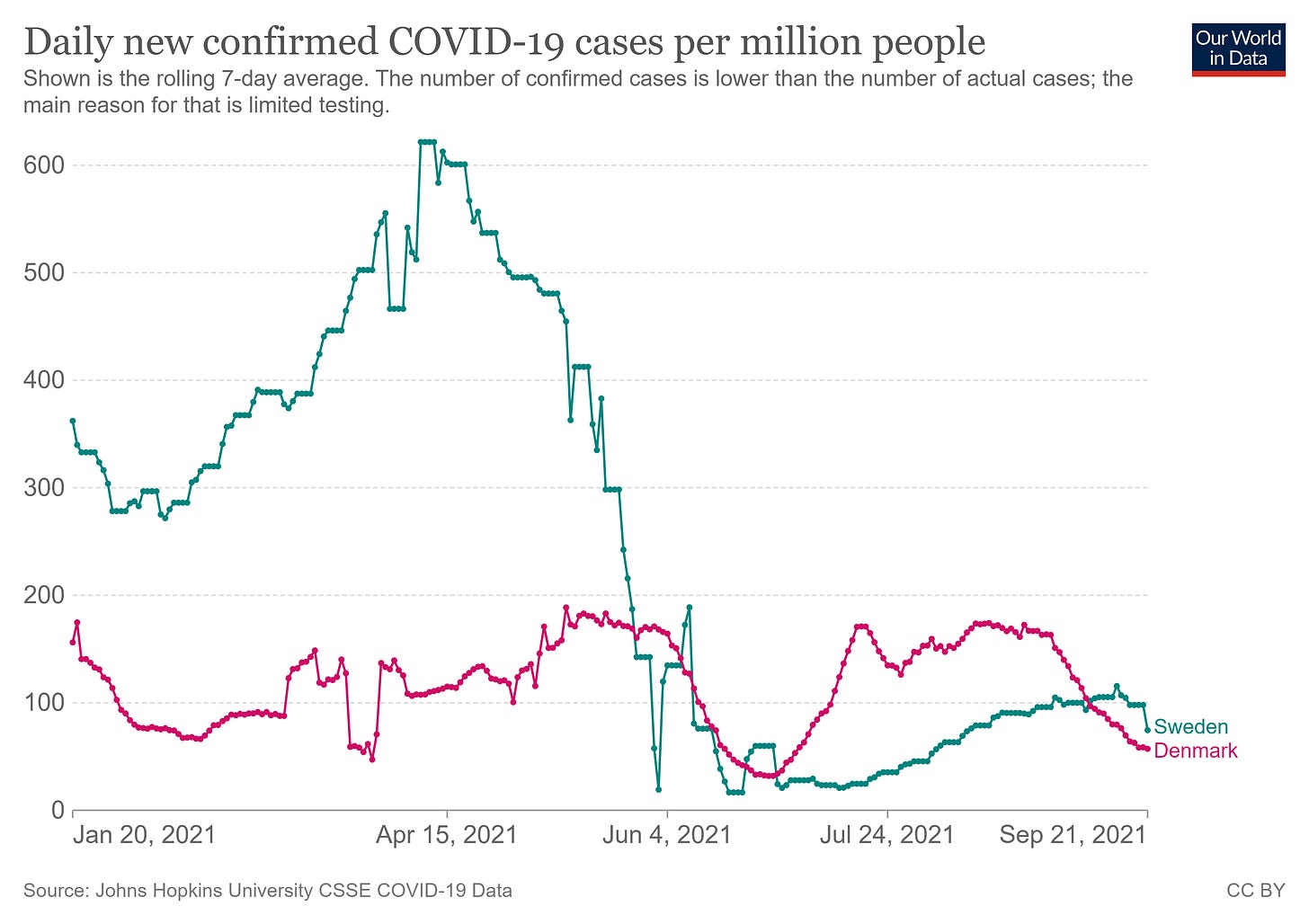

“I would be very surprised if the U.S. data don't turn out to be ultimately very similar to the Israeli data,” - Anthony Fauci, according to Politico.
From https://www.politico.com/news/2021/09/14/covid-israel-data-vaccine-efficacy-511777
Perhaps Fauci will finally have a prediction come true?
What happened in Mongolia? They were doing fine until they started injecting people.
https://www.worldometers.info/coronavirus/country/mongolia/